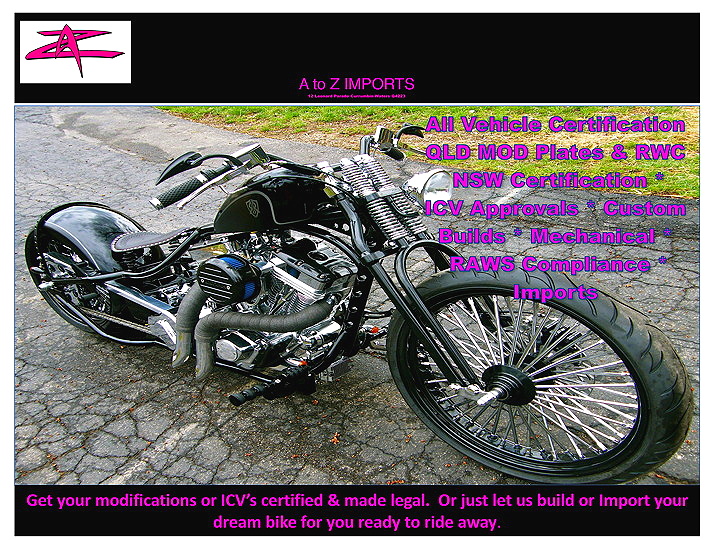
No Comment 1939 U-Model Flathead Harley-Davidson
“… no brake lights because it didn’t come with brake lights so you’ve got to hold your hand up for all your actions…”
SO THERE we are, Speedy and I. We’ve known each other about four hours and got on pretty well in that time. We’ve had a drink with a few of the other guys at the Iron Horsemen MC clubhouse, gone out and looked at a few potential photo sites around the area, settled on one and taken the photos. He’s ridden considerately slow so I can follow him back to the clubhouse without getting lost and we’ve had another drink. More drinking looks imminent, and welcome.
“Tell me a bit more about the bike, Speedy,” I say. “Where did you get it from?”
“No comment.”
Fair enough, this happens now and again: people come across a treasure trove and naturally don’t want the word to get out until they’ve claimed all the pieces they want for themselves.
“What year and model is it?”
“No comment.”



Hard to see how that could be sensitive information; he’s been talking quite freely about the bike for four hours! Maybe try something a little more obvious that anyone could answer.
“What colour is it?”
“No comment.”
Out comes a characteristic burst of pure knee slapping joy.
“We can do this for hours and hours,” he laughs, then promptly starts giving the bike’s details with an ease and fluency that has them rolling off his tongue faster than I can keep the questions coming.
“It’s a 1939 U model 1200 Flathead. I bought it from a guy in Myrtleford who had a fucked up back and couldn’t ride it anymore. It’s a four-speed, and a lot of people mistake it for a WLA. It’s not a WLA; the difference between a WLA and a U model is that a WLA has a single down tube frame; a U model has a double tube frame. A WLA has a 750 cc side valve; mine has a 1200 side valve. A WLA has a three-speed; mine has a four-speed. So if you’re going to talk car talk, it was a GTHO in its day.”


“It’s a genuine California Highway Patrol bike. You look at the speedo and it’s got Police Special; basically that was the bike that could run down any car because it was fast and reliable for its day.
“ Obviously I’ve chopped it. When people ask why didn’t you keep it original, I say it’s because that’s the way I like the look of it; it shows a bit of character.
“The colour is not period correct. That’s a late model pearl colour. It’s got a Japanese Mikuni carburettor which is not period correct — that just makes it 10 times more reliable and run smooth — otherwise pretty much everything on it’s how it would have been in the day.
“The gear shift’s factory original. Original shift, original tanks, original frame, original motor that matches the frame, original oil tank. You have to put it next to an original one, then you can see how it’s all been changed. For example, the original guard goes all the way down and lips, so what you did in the day was you cut a foot out off the guard, brought it up and into a ducktail.”


“Bars, you got a bit of steel and bent them up. The front end’s off a ’40s model Servicar, I believe, which just bolts on.”
The headlight is a standard one from 40 or 50 years back that’s been converted from 6 volt to 12 volt for modern reliability. In truth, the bike doesn’t really need a battery to run as it came equipped with a magneto; you could pull all the electrics out if you had a mind to and the bike would still run. The battery’s role is to circulate power for the lights.


Reliability’s always going to be an issue with older machines, so Speedy has an ’03 Dyna Low Rider for his everyday bike. But as he says to those who ask, “Let’s see how your Jap bike’s running in 70 years. Old is gold. The older it is, the cooler it is. There was a time when I used to ride this bike every day for years and years. It was what it was. You’ve got the foot clutch, hand shift, drum brakes that don’t stop, no indicators because it didn’t come with indicators, no brake lights because it didn’t come with brake lights so you’ve got to hold your hand up for all your actions.”
As an interview draws to its conclusion, it’s always customary to ask if the bike owner has anything he’d like to add, or anyone to mention. This serves a couple of purposes: it’s a courtesy to the owner and the people involved with the bike, and it’s also a way of making sure you haven’t forgotten to ask anything important or failed to clarify some detail or other.
As it happened, there was one more thing Speedy wanted to emphatically declare in response to this last question: “No comment.”


Words & pics by Chris Randells

